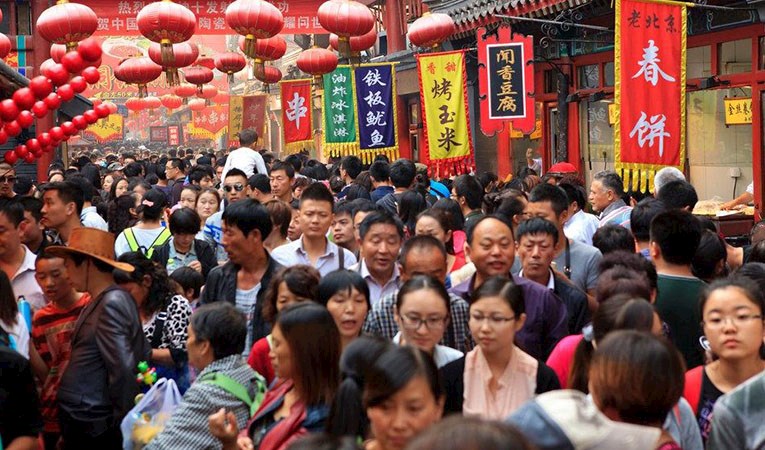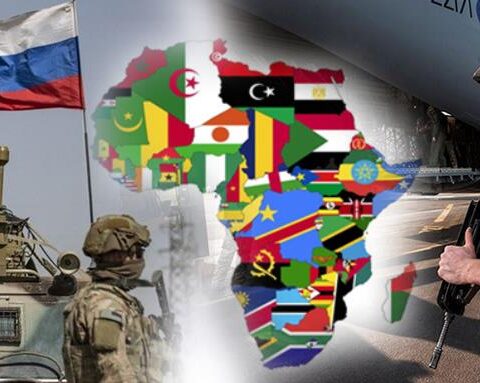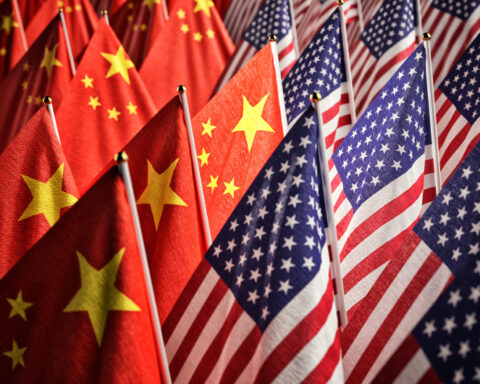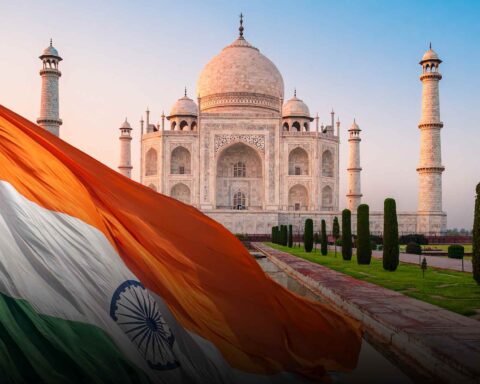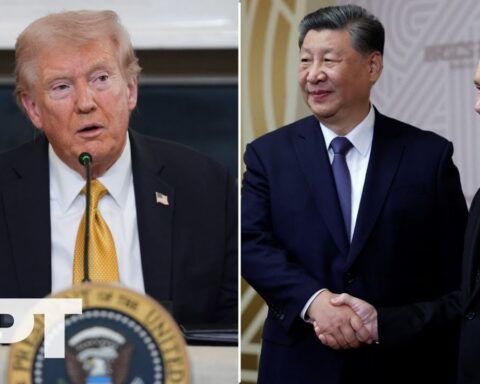We are living through a period of profound economic and geopolitical change. The global system of free trade is steadily eroding, giving way to tariff barriers and increasing reliance on bilateral agreements. At the same time, the era in which countries could rely on growing wealth to shield their citizens from the insecurity of old age and unemployment is coming to an end, as the need for higher defense spending forces governments to make hard choices about how they allocate resources.
China’s rise has been a major driver of these transformations and remains central to debates over supply chains, technology transfer, intellectual-property theft, and international debt finance. The country’s ongoing economic slowdown, in particular, has raised two critical questions: Will the current downturn prevent millions of Chinese consumers from sustaining both domestic and global growth? And will it prompt China’s government to pursue a more confrontational foreign policy, especially toward Taiwan and the South China Sea?
These questions have become increasingly urgent as US President Donald Trump seeks to redefine America’s stance toward its main geopolitical rival. At the recent Shangri-La Dialogue in Singapore – a key forum for discussing Asian security – Secretary of Defense Pete Hegseth reaffirmed the United States’ long-standing commitment to supporting Taiwan’s ability to defend itself against Chinese aggression. This tough stance has softened somewhat since a recent phone call between Trump and Chinese President Xi Jinping and an emerging rare-earth deal, signaling a potential thaw in trade relations after months of an increasingly bitter tariff war. Still, with bilateral tensions running high, it remains unclear what role the US envisions for China and how China defines its own place in the emerging global order.
Remarkably, contemporary debates about China and Chinese policy rarely revisit the period nearly half a century ago, when the People’s Republic first re-entered the capitalist world. It’s a striking omission, given that era’s role in shaping today’s fraught geopolitical environment. In their important and innovative 2024 book, The Great Transformation, historians Odd Arne Westad and Chen Jian examine how, between the 1960s and 1980s, China moved from a rigid Soviet-style command economy, through the radical autarky of the Cultural Revolution, to a distinctive form of state capitalism framed as “socialism with Chinese characteristics.”
China’s transformation, of course, did not take place in a vacuum. Beginning in the 1970s, neoliberalism reshaped the global economy by encouraging freer capital flows and a shift away from government intervention and planning. China’s extraordinary growth in the 1980s and 1990s was closely tied to these global trends, enabling it to harness its immense labor force and put itself on a path to becoming the world’s manufacturing powerhouse.
It wasn’t long before American consumers, buoyed by easy credit, began borrowing heavily to buy Chinese-made goods, fostering a deep mutual dependence that historians Niall Ferguson and Moritz Schularick famously dubbed “Chimerica.” Meanwhile, the phrase xiahai (“jumping into the sea of commerce”) became shorthand for the entrepreneurial wave sweeping across China, as the world’s largest communist country rapidly became one of its most dynamic capitalist economies, seemingly destined for global preeminence.
The Political Perils of China’s Opening-Up
Two recent books – Robert Suettinger’s The Conscience of the Party and Jonathan Chatwin’s The Southern Tour – explore the dynamics that shaped China’s era of “reform and opening-up.” By focusing on the key individuals who drove the country’s economic transformation, both authors vividly illustrate how decisions made during the final years of the Cold War and its immediate aftermath continue to influence the world today.
Suettinger tells the story of Hu Yaobang, a former general secretary of the Communist Party of China (CPC), whose place in the country’s political history remains ambiguous. Unlike his close ally Deng Xiaoping, who is widely credited with leading China’s economic transformation, Hu is largely absent from official narratives of the reform era. At the same time, in contrast to former CPC General Secretary Zhao Ziyang – who was purged for opposing the military crackdown on the 1989 student protests at Tiananmen Square – Hu has not been completely erased.
Hu was one of the most influential liberal voices within the CPC through much of the reform era. In the 1980s, he worked closely with Deng, helping to foster the political climate necessary for China’s transformation to succeed. Suettinger, a senior adviser at the Stimson Center, draws on a wide range of sources – including internal Party documents that are no longer publicly available – to produce a thoughtful and deeply researched biography that casts Hu as a central figure in China’s post-Cultural Revolution renewal.
Born into a poor peasant family in Hunan, Hu was an early convert to the Communist cause and one of the youngest participants in the Long March of 1934-35. Yet the hardships he endured would later lead him to question the costs of political radicalism. During the Cultural Revolution, he was condemned for alleged political crimes, paraded in public wearing a wooden collar, and forced to endure years of manual labor in the countryside.
These harrowing experiences, which appear to have left Hu deeply skeptical of unchecked authoritarianism, also made him a vital ally to Deng, who took power in 1978 and emerged as the chief architect of China’s post-Mao economic reforms.
Hu’s influence on this new direction was immense. Working alongside reform-minded colleagues like Wan Li, he helped spearhead one of the earliest and most consequential initiatives of the reform era: agricultural de-collectivization. Between 1980 and 1984, Hu oversaw the dismantling of thousands of collective farms and the reintroduction of family-based agriculture.
Suettinger captures what made Hu remarkable and why it ultimately alienated him from many of his peers in the CPC leadership. “For him, reform entailed a recognition that something had gone wrong and needed to be changed,” and that the something in question “was more than simply economic performance and competitiveness.”
To be sure, Hu was not the only CPC leader to suffer during the Cultural Revolution. Deng, for example, was exiled, and one of his sons was paralyzed after Red Guards threw him from a window. But Hu stood out for maintaining a firm belief in the Communist system while insisting that it incorporate a different, more humane understanding of suffering.
Things came to a head in 1981, when Hu was tasked with overseeing the drafting of the Resolution on the History of the Party. Despite its innocuous title, the document was a major ideological undertaking that grappled with a politically explosive question: How could the CPC condemn the Cultural Revolution without destroying the legacy of Mao, the founder of the People’s Republic?
Hu favored a more radical approach, though the details of his proposals remain unclear. What we do know is that Hu’s ideas alarmed Deng, who abruptly removed him from the drafting committee and handed the project to more ideologically orthodox figures like Deng Liqun and Hu Qiaomu. Hu, meanwhile, was sent on a “forced rest” to scenic Mount Tai in Shandong province.
The final rupture came in January 1987. Hu was ambushed by Deng and his allies at a meeting where his liberal leanings and loyalty became the focus of a relentless, orchestrated attack. One critic, Deng Liqun, spoke for six hours, cataloging his many grievances against Hu. About 50 senior CPC officials surrounded him and, in Hu’s later account, sought to “humiliate me and criticize me until I stank.”
Deng Resumes Reform Push
Hu’s death in April 1989 triggered the student and worker protests that culminated in the Tiananmen Square massacre on the night of June 3-4. Yet the horror of those events ultimately did not bring down the CPC. In the years that followed, economic growth stagnated as the faction led by figures such as Chen Yun argued that the combination of economic and political liberalization had imperiled China.
By the early 1990s, however, Deng realized that the retreat from market reforms could become permanent. Chatwin’s fascinating The Southern Tour traces how he pushed back against the Party’s more orthodox factions. Though shorter than Suettinger’s book, it is equally rigorous.
Chatwin focuses on the relatively under-examined period of 1989-92, showing that despite his immense authority, Deng had to push hard to restart economic reforms. He and his supporters, for example, organized a high-profile visit to reform hubs such as Shenzhen – a former fishing village near Hong Kong that had rapidly grown into a major city and become a symbol of capitalist exuberance.
The behind-the-scenes dynamics are revealing. In January 1992, Deng delivered a private address to China’s military brass in the incongruously modern setting of a revolving restaurant in Zhuhai, near Macau. “Whoever is against reform will be driven out of power,” he declared. The statement made clear that the military supported his reform agenda. It also served as a pointed warning to someone who was notably absent from the gathering: CPC General Secretary Jiang Zemin.
Although Jiang was nominally China’s most powerful figure, Deng’s gesture was meant to signal to him and others that any retreat from the reform path could end their political careers. While little is known about the most intimate details of elite politics in Beijing today, one cannot help but wonder whether such a meeting could still take place, given the absence of alternative power centers.
The Vanishing Liberal Consensus
Suettinger and Chatwin’s excellent books capture a historical moment that arguably ended in 2008, when the global financial crisis cast doubt on the future of globalization. But the choices that defined that era still matter today, particularly for US-China relations.
From the perspective of many American policymakers today, US support for China’s reintegration into the global economy – especially its 2001 accession to the World Trade Organization – was arguably a strategic mistake that enabled China’s emergence as a peer competitor. But there are other factors that should not be forgotten. Notably, America’s support for China’s economic rise was partly driven by an often-overlooked geopolitical imperative: the effort to weaken the Soviet Union.
While Suettinger focuses more on Hu’s domestic policies, he portrays Hu as a key advocate within the CPC for greater openness to the West. Had a different faction prevailed, China might have pursued a more Western-oriented path.
There were also economic motivations behind America’s support for what Deng had called China’s “reform and opening-up.” Under President Ronald Reagan, the US issued vast amounts of debt that fueled demand for Chinese goods. In the 1990s and 2000s, China notoriously engaged in industrial espionage while directing a significant portion of its economic gains toward research and development to spur domestic innovation. The US could have made similar investments in R&D but didn’t.
Key players, both East and West, appear to be moving away from the liberal norms that defined the global trading system of the 1980s and 1990s. In 2021, China adopted a “dual circulation” strategy aimed at boosting domestic demand and making its economy as self-sufficient as possible.
During his first presidency, Trump placed some restrictions on Chinese imports, many of which were retained and refined by his successor, Joe Biden. Trump’s second administration has taken a far more radical approach, targeting not only China but also the rest of the world. Of course, as with many of his policies, Trump’s approach to trade – particularly with China – remains unpredictable.
Would these developments have shocked Hu or Deng? As Suettinger observes, Hu saw a clear link between liberal economic reform and a freer society. The steady erosion of political freedom under Xi certainly would have troubled him. Although China today is not as repressive as it was during the Cultural Revolution – there is no indication that CPC leaders want to foment a revolution from below or upend the Party structure – Hu would have recognized the danger of silencing debate on key economic and social issues.
Assessing how Deng might have responded to today’s conditions is more complicated. His brutal crackdown on the 1989 student protests showed that he was unwilling to let economic liberalization lead to political pluralism. But his decisive push to revive market reforms suggests that he believed China’s future depended on its full integration into the global economy.
But that global economy is no more. In the absence of a single liberal hegemon, as the US was for much of the postwar era, the world is shifting toward nationalism, protectionism, and strategic competition. While this turn is more openly acknowledged in the US than in China, both countries’ policies reflect a broader, likely lasting disestablishment of what had become global norms.
By contrast, the liberal reforms championed by Hu and Deng were shaped by a zeitgeist that made a more open world seem inevitable. It may be too early to declare the emerging international order a closed one, but the events and tensions unleashed by Trump’s global trade war point to a decisive inward shift. In that sense, the period chronicled by both Suettinger and Chatwin feels like a long-bygone era.
Rana Mitter, is Chair in US-Asia Relations at Harvard Kennedy School and the author, most recently, of China’s Good War: How World War II Is Shaping a New Nationalism (Harvard University Press, 2020).

